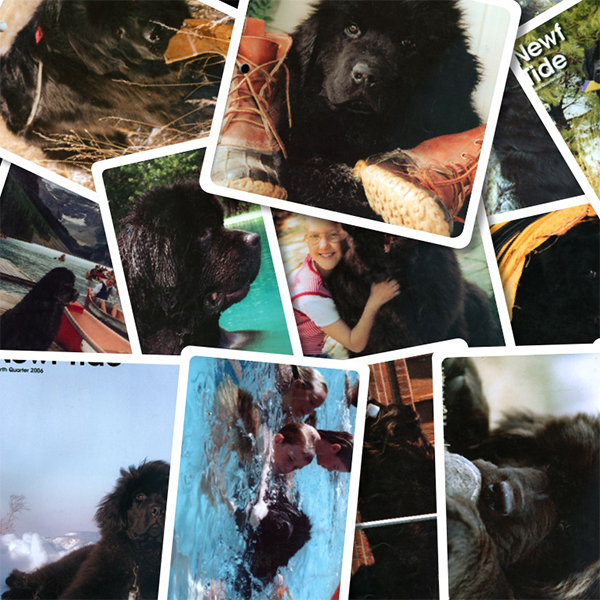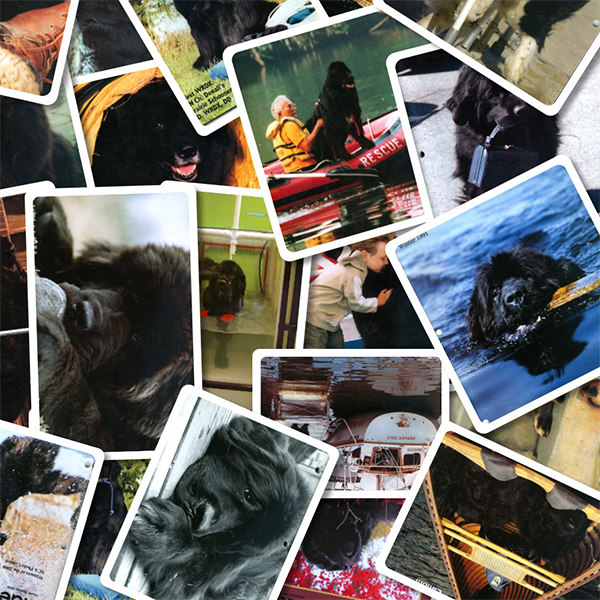by Roger Powell
Actually, these are not real secrets. But they are three points that many people do not realize.
|
 |
Point 1: The Draft Test Regulations are not a training manual.
Draft tests were devised so that people who have worked with their dogs in harness can test their abilities. This orientation makes draft tests different from many other dog-related activities. The intent is not that people will train their dogs primarily to pass draft tests. The intent is that people who work with their dogs regularly will have a way of testing their abilities, a way of testing themselves against a standard. The Draft Test Regulations were written so that people could put on such tests in a standard manner. The Regulations were written as guidelines for the people putting on the tests.
Why were draft tests devised this way? One cannot learn to do draft work from reading about a narrow set of exercises. Draft work is not as simple as it may appear. To do draft work, a person and a dog (or dogs) must work together using equipment that is appropriate for the dog and for the job at hand. Both the person and the dog must learn how to use equipment; this is more than just learning how to pull. The dog must learn how the equipment responds under different working conditions and how to change his behavior to make the equipment work right under those conditions. The dog must learn how to overcome common problems. A dog working in the woods must learn how to prevent equipment from catching on logs, branches and rocks. A dog pulling kids in a wagon must learn how to handle kids' wiggles. And the dog's owner must also learn how to use equipment properly. The dog, after all, cannot climb into the harness and hook himself to his draft apparatus. The owner must learn what equipment is appropriate for what jobs and conditions and for what dogs. Consequently, at a draft test, not only are a dog's abilities to respond to commands tested but also his and his owners' abilities to understand their equipment.
So, how do a dog and owner learn all this? By living together day in and day out, so that they learn to read each other. The dog and the owner must become so familiar with each other that each trusts the other and depends on the other. And they must do lots of draft work together so they each learn how the other responds to the challenges of working. The learning may come a little more quickly if the owner reads, talks to people who have worked with dogs in harness, or attends a workshop. Nothing, however, beats simply working together, dog and owner, at the job at hand, whatever that job maybe.
The draft work that Newfs can do varies tremendously.
For example, some of Consie's and my dogs have mostly hauled firewood. One mostly pulled research gear. One pretty much cornered the market on taking kids for wagon rides (her favorite was kindergarten classes). Several of our girls have pulled various carts and wagons in parades. The dogs live in our house with us. They hang out with Consie in her studio all day. They spend time with us when we work outside. And they are with us so much that they and we know how each other ticks. It is a great way to live a life with dogs.
So, draft tests were devised so that people who do things with their dogs in harness can test their abilities against a norm, against a standard. How can one have a standard for something as varied as draft work? That is where the Draft Test Regulations come in: They were written to explain how a standardized test should be administrated and performed. The Regulations were not written as a training guide. Training information must be obtained elsewhere, mostly from experience. The objective of the Draft Test Regulations is to make available a standard collection of exercises against which owners and dogs can test their abilities at draft work.
Point 2: The Draft Test Regulations are written to accommodate draft tests in any season.
To date, all draft tests have been scheduled for non-snow seasons and few winter workshops and matches have been held. Nonetheless, the Draft Test Regulations have been written, from the start, to be able to test dogs and owners doing draft work in any season. Much historical draft work by Newfies was done in winter. Newfies pulled logs to the sawmill and they delivered mail by dog sled. Consequently, any Regulations for testing the abilities of Newfies to do draft work must be able to accommodate winter draft work.
If you read the Draft Test Regulations closely, you will note that sleds and toboggans are mentioned in many places. Weight limits are given for sleds and toboggans. Distances for backing are within limits set by the lengths of traces for sleds and toboggans. A dog can back the designated distance while hitched without bumping into its draft apparatus; its traces simply go slack. The Regulations have been written thoughtfully to accommodate draft apparatus that do not have shafts and that, therefore, are not braked automatically when the dog stops. On hard packed surfaces and on hills, a handler working with a dog pulling a sled or toboggan must develop a means to brake the apparatus. Such a brake could be a rope tied to the sled or toboggan for the handler to hold; I have done this at times. A judge might consider using such a brake to be "touching the apparatus." If so, the handler must make arrangements with the judge before the test as to whether the handler must request permission to use the brake or simply may use it whenever needed to brake the apparatus (but not the dog).
This brings me to my third point.
Point 3: The Draft Test Regulations are not perfect.
For reasons I do not understand, many people remember clearly the artificial restrictions placed on handlers and dogs in draft tests but do not remember as clearly the flexibility written into the Regulations. This might be a problem related to how the Regulations were written or it may be a problem related to how people read and remember. In my opinion, handlers think far too much about being failed for doing something rather than thinking about what one would do in a working situation. Handlers should act in tests largely as they act when working with their dogs. If something goes wrong during a test, a handler should not hesitate to grab his or her dog or apparatus. A handler must always keep the safety of his or her dog foremost in mind. If doing so requires the handler to break another rule, so be it. The Regulations allow dogs and handlers to be retested if need be. A handler who puts the safety of his dog foremost should never be failed for doing so. Now, he might be failed for not anticipating a problem that would clearly arise or for not recognizing the problem once it does arise, but he should not be failed for acting to keep his dog safe. This issue has many ramifications, and I plan to discuss the issue in more detail in a forthcoming column.
An intriguing problem related to the Regulations is how to test a handler and dog who have no draft apparatus. Let me explain. During the academic year 1990-91, Consie, Virginia, our Newfs and I lived in Laramie, Wyoming, while I took sabbatical at the University of Wyoming. We did not take our toboggan to Wyoming because we had to be able to pack everything for the year into a few boxes that we shipped via UPS or into our Nissan pickup. The toboggan simply would not fit. Consequently, when we went into the woods in the Medicine Bow Mountains to cut firewood, our Newf girls had to skid the logs from where I cut them to the truck. Working with the girls on this job was always fun. By the time winter was drawing to a close, we all had mastered an efficient system. I would fell standing dead trees and then cut them into lengths that Canoni, Milakokia and Ishkoodah, working together, could pull. For the first several logs, Consie worked with the dogs, showing them the route to the truck. Thereafter, I cut logs and hitched the dogs to them, the dogs skidded the logs to the truck, and Consie unhitched the dogs and loaded the logs into the truck. Consie would send the dogs back to me for another load. The system did not always work perfectly. Sometimes I cut a log too big and helped the girls with it, strapping my own trace around the log and hauling with the girls. And sometimes the girls got a log hooked on something under the snow and needed help to get it free. Usually the girls did an excellent job of skidding the logs through the snow to the truck. Each time the girls hauled a log, the log was their load and they actually had no draft apparatus.
This same situation occurs some year’s when our girls haul our Christmas tree from the woods to our cabin in Wisconsin. When we do not strap the tree to the toboggan, the tree is all that the girls haul. And the same situation occurs again when Newfs help to clear junky places. The dogs can skid logs, boards, old tires and other junk across rough ground without using an apparatus. Clearly, this work is draft work and the dogs who do it are good draft dogs, yet, at present, the Draft Test Regulations have no way to deal with this draft work situation. I have considered showing up at a draft test with a log as my "draft apparatus," to press the issue. But I have refrained. I do believe, however, that to arrive at a test with a log or a tire is legitimate and that judges must be able to deal with such situations.
The Draft Test Regulations have many other hidden "secrets." They are good regulations, written to help people put on tests. Through draft tests, we can test our dogs' skills and our skills at the great many tasks that constitute draft work.
Give your draft dog a hug from me.
reprinted from NewfTide 1997

